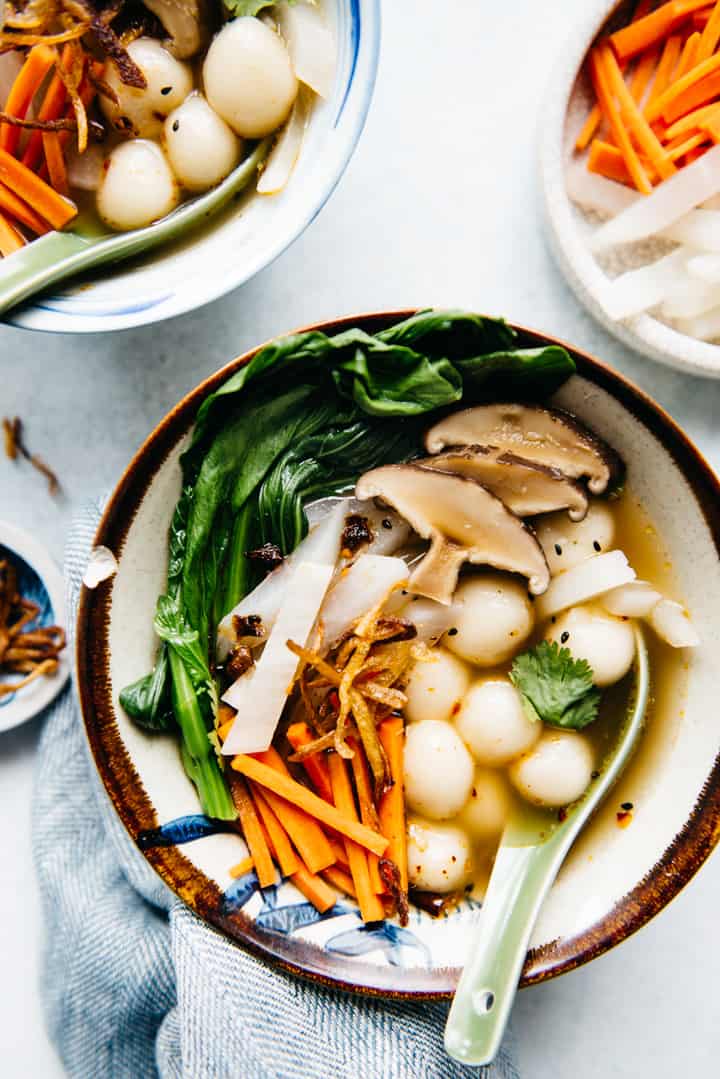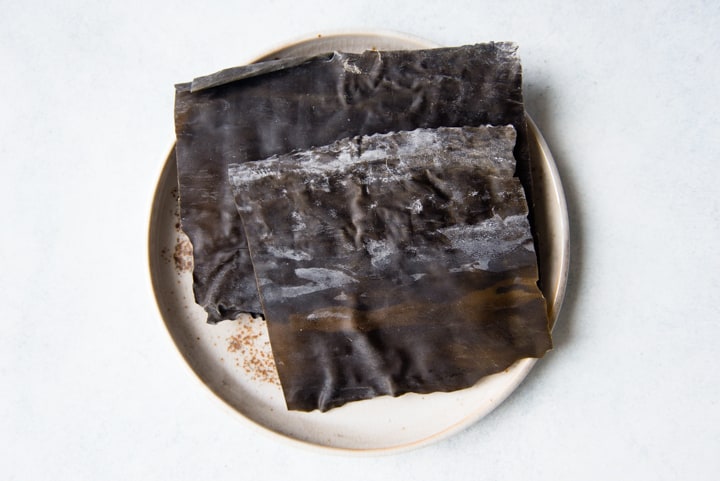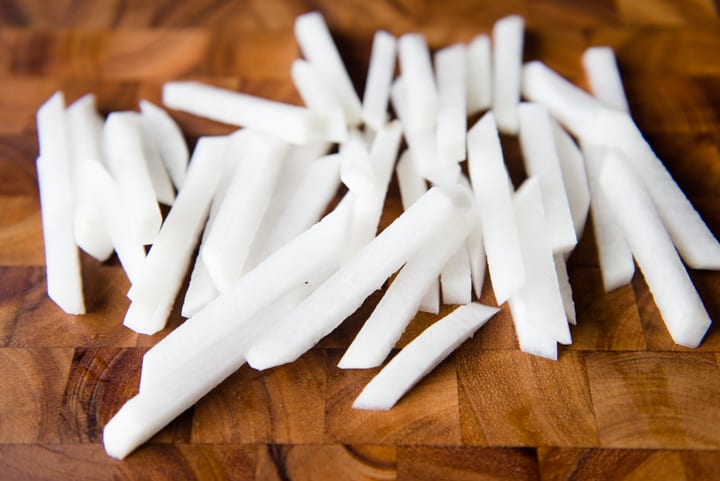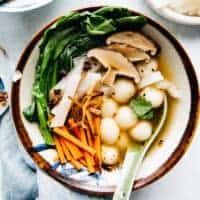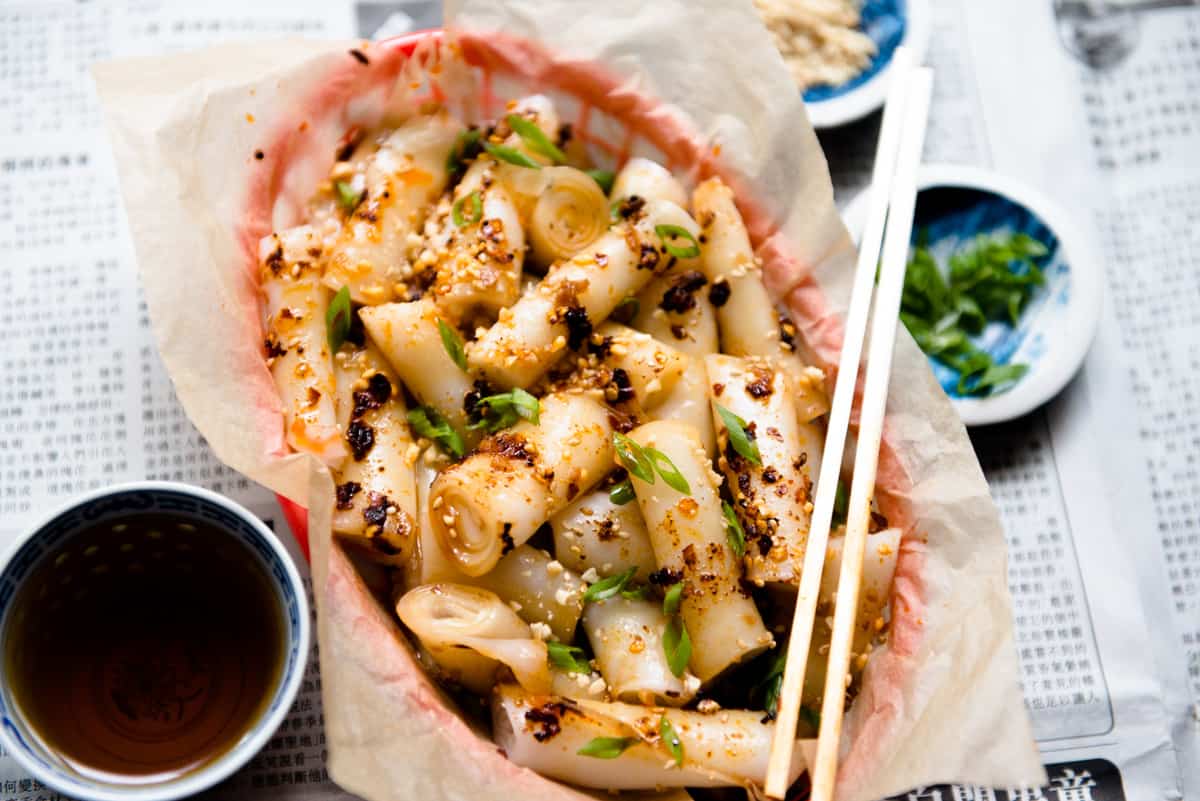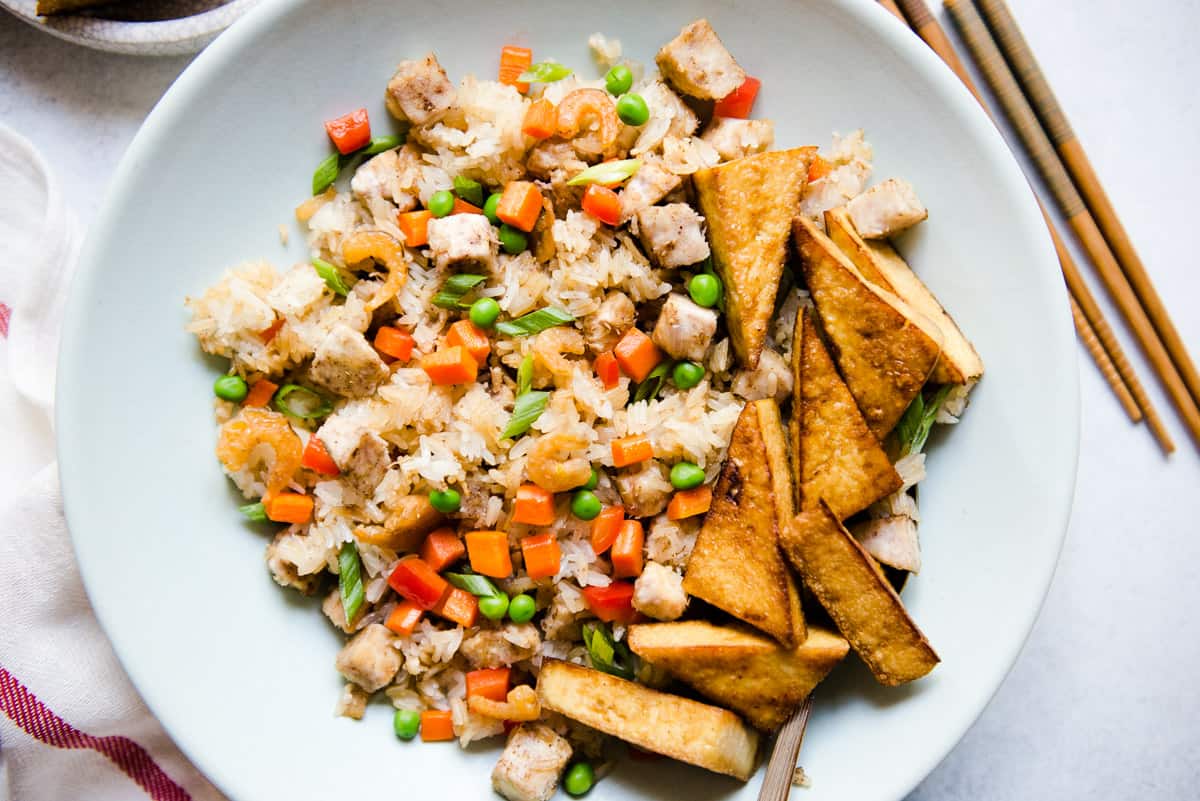In southern China, families gather together to make and eat tang yuan (湯圓 / 汤圆) for dongzhi. Tang yuan are small dumplings made with glutinous rice flour and water. The circular shape of the dumplings symbolizes one’s family coming together (or tuanyuan, 團圓 / 团圆). Families will make the sweet and/or savory version of tang yuan, though my family prefers the savory kind. For the dish, Mama Lin typically prepares a broth that is flavored with chicken stock, dried shrimp, Chinese sausage, lean pork, onions, and garlic. To serve, we’ll top the bowl of tang yuan with boiled daikon, fried fish cake, cilantro, and white pepper. Growing up, I favored the toppings over the plain rice dumplings. I have to admit, that is still the case.
VEGAN VERSION OF SAVORY TANG YUAN
I decided to make a vegan version of the dish, as most of my followers always ask for vegetarian and vegan options. There are two key ingredients that give the broth a delicious and rich umami flavor: dried shiitake mushrooms and kombu (kelp).
MAKING TANG YUAN DOUGH
Some people like to make the dough with boiled water. In the last 10 years or so, Mama Lin has opted for room temperature water because the dough is a lot easier to handle. She calls this the “cold-water dough.” Tang yuan dough made with room temperature water is less sticky to the hands and stays moist a little longer. It is also a relief for your hands when you knead the dough initially. Once cooked, the texture of the dumplings are the same for the hot-water dough or the cold-water dough. The drawback of the cold-water dough is that they will stick slightly to the plate and to each other. When you roll the dumplings and transfer them to a plate, make sure the dumplings don’t touch each other. When you are ready to cook them, gently brush them off the plate. You’ll see that a tiny bit of dough will be stuck to the plate, but don’t stress about it. Mama Lin, ever the resourceful one, scrapes the bottom of the plates for dough to make one last small dumpling.
COOKING THE DAIKON
One key element to Mama Lin’s savory tang yuan is daikon. Mama Lin prefers using what she calls “Chinese daikon” (versus “Japanese daikon”), which is more plump. To cook the daikon, she boils it with dried shrimp for umami flavor, as well as chunks of rock sugar (冰糖, bing tang). The sugar helps balance out the slight bitter flavors of daikon. Instead of using dried shrimp, I used dried shiitake mushrooms. I also used rock sugar, but you can replace that with a tablespoon or so of granulated sugar.
LOOKING FOR MORE CLASSIC CHINESE DISHES? TRY THESE:
Classic Rice Noodle Rolls (Cheung Fun) Mama Lin’s Chinese Sticky Rice with Taro
